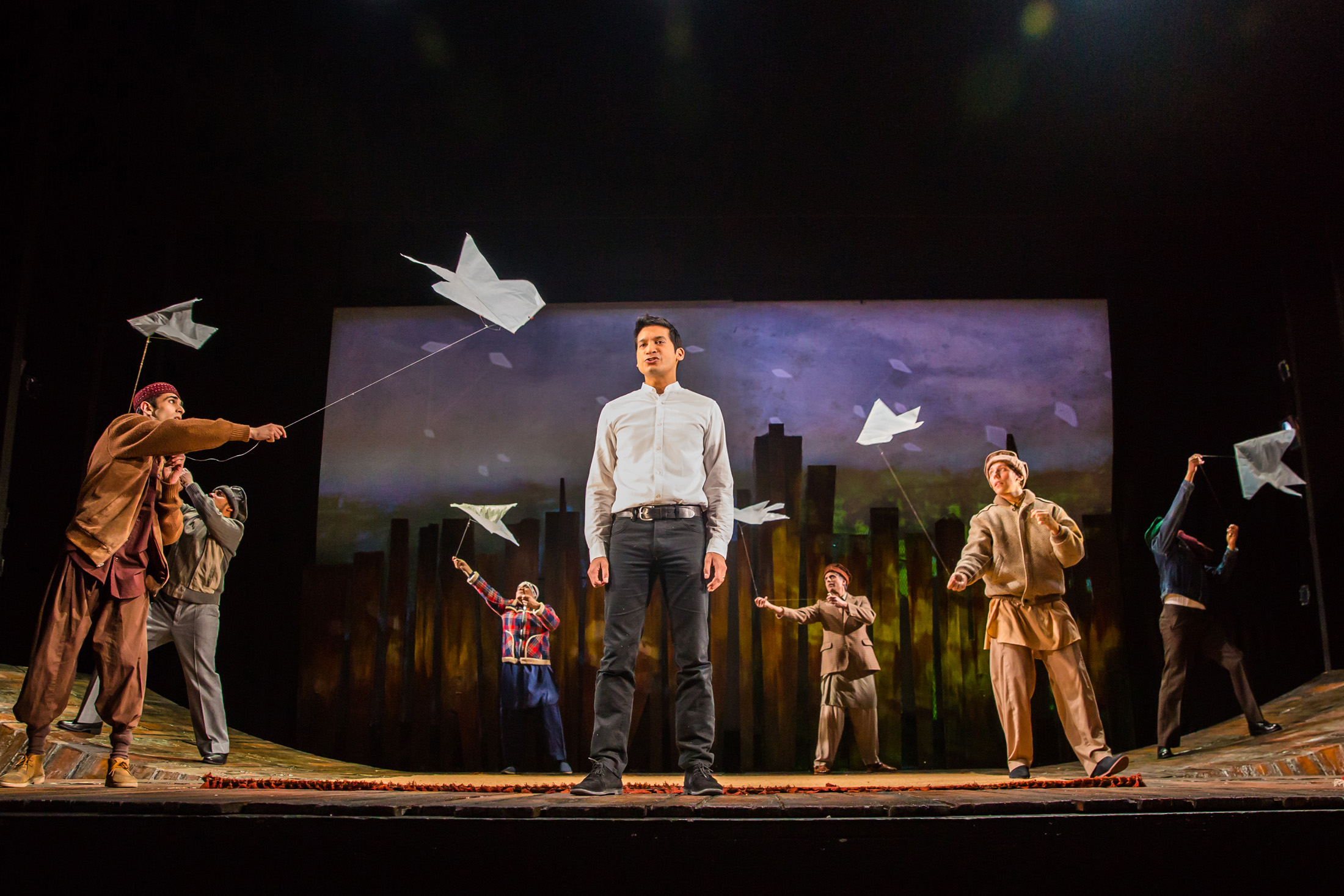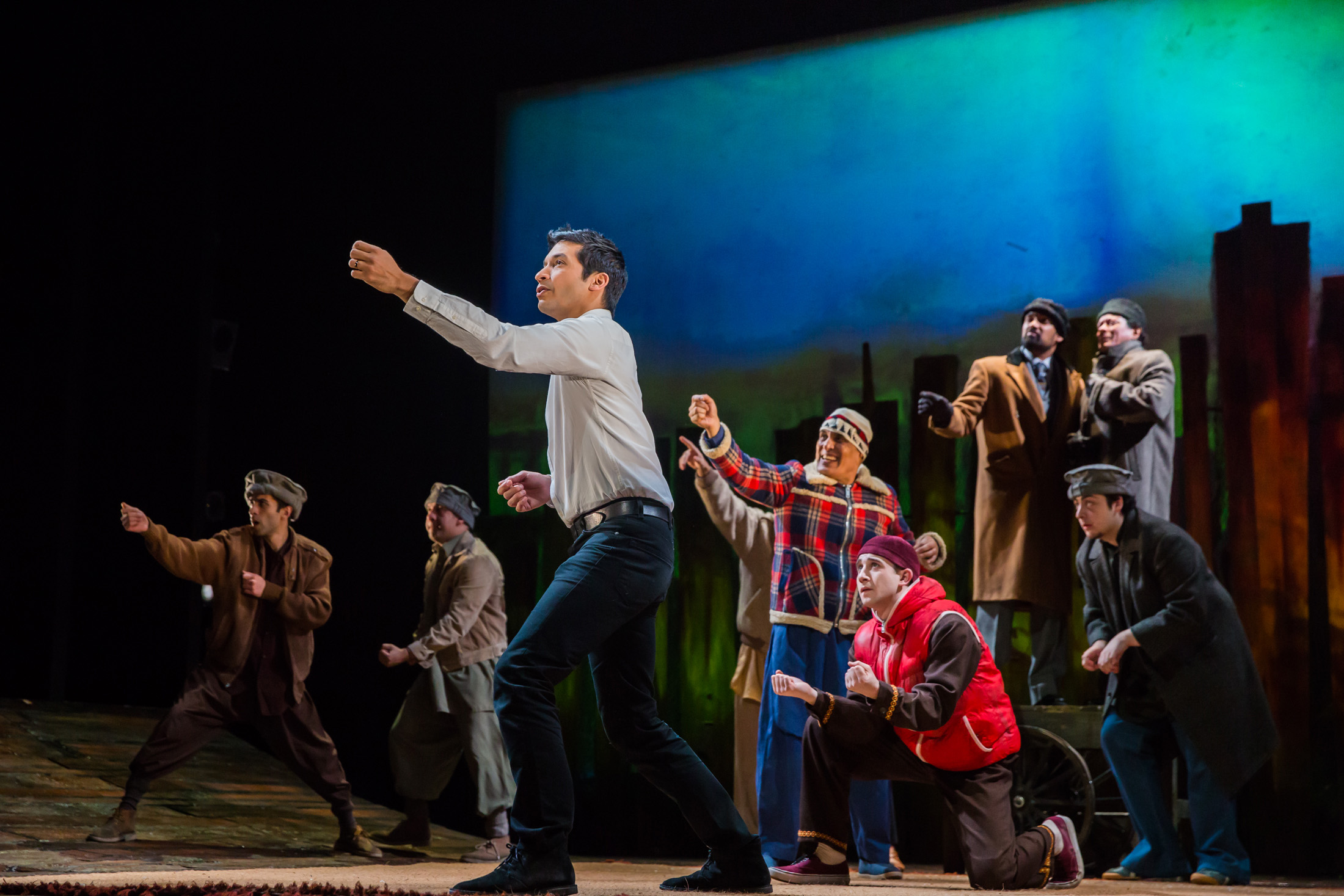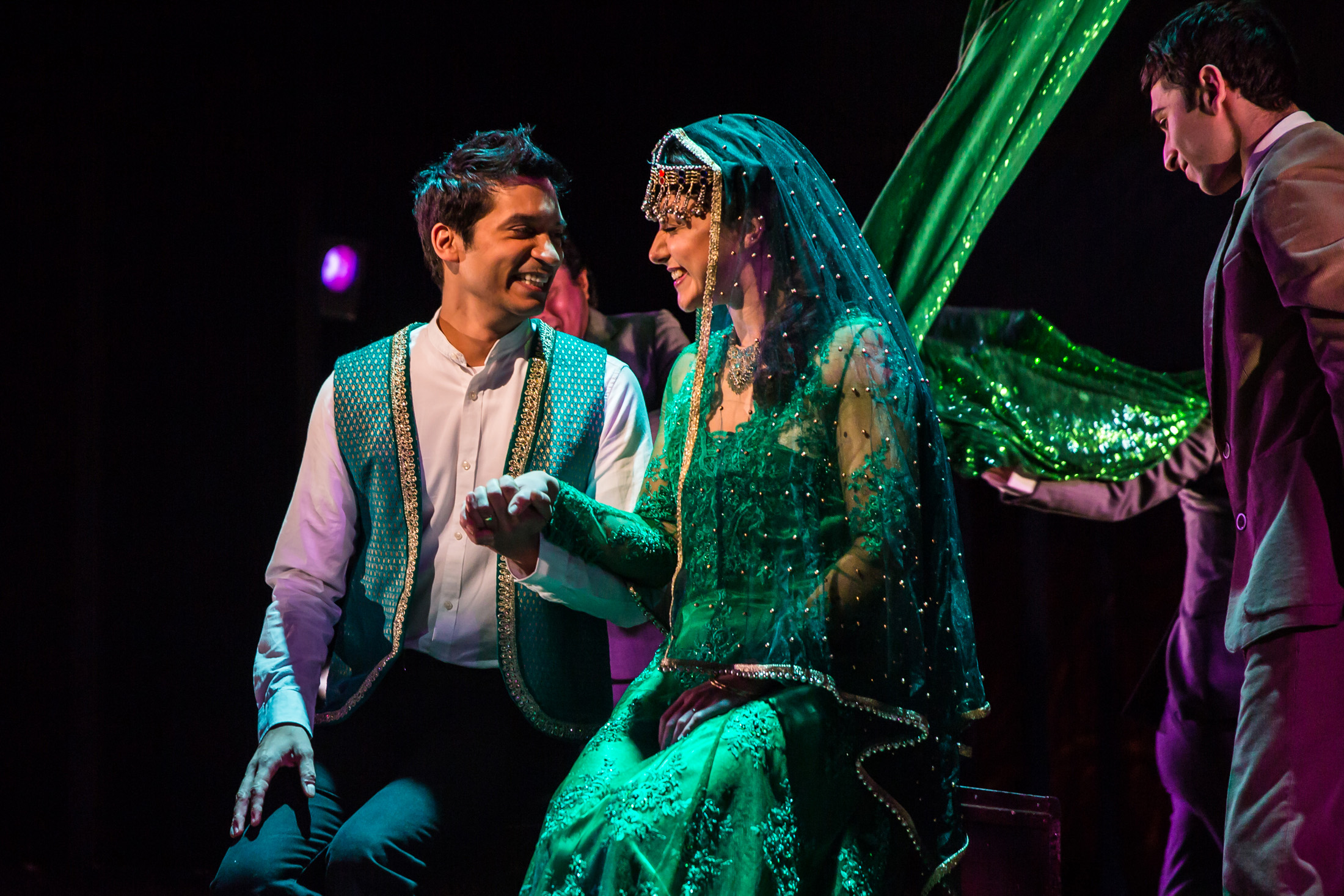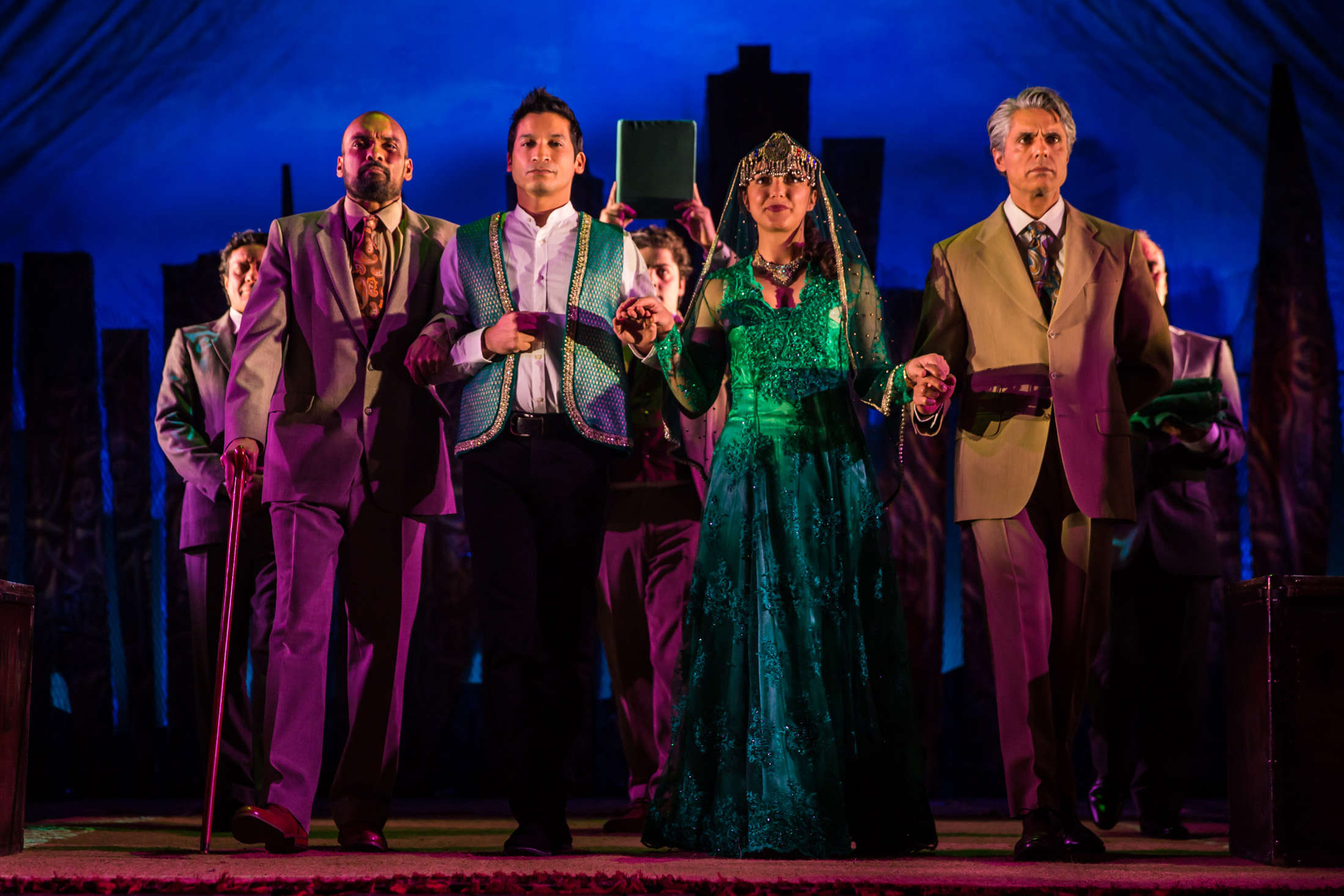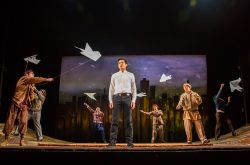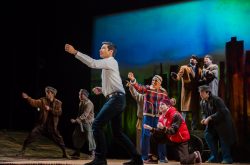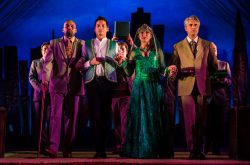Matthew Spangler’s adaptation of Khaled Hosseini’s The Kite Runner is captivating from the moment the first kites grace the stage; free-flowing, dove-like and a reminder of the peace that is to be disturbed.
Story-telling is at the heart of the play. Strong narration from Raj Ghatak, who plays protagonist Amir, drives the production. Although a powerful form in places, there were moments in which this style did detract from the more intense plot points. It often left a sense of detachment from the horrific events that were described. In this sense, there was an enormous amount of pressure placed on Ghatak’s delivery. Yet the actor took on this hefty task with confidence and ease, rarely leaving the stage but performing with unwavering energy.
His openness in presenting Amir’s vulnerability was endearing to watch, predominately teased out through the relationship created with Gary Pillai, who played Amir’s father. Questions of masculinity were raised in many poignant moments between the two characters, with Pillai conveying the dichotomy of controlling father and vulnerable immigrant.
The relationship between Amir and his friend/ servant Hassan (Jo Ben Ayed) is the most memorable of this production. Their friendship is presented with an infectious level of playfulness, yet they also convey the difference in power dynamic between the two boys. This means that the deeper issues of race and class can be examined, however uncomfortable this may be from within a child’s world.
His brutal treatment at the hands of bullies is tear-inducing yet presented sensitively
At times, Hassan’s inferiority felt too heightened – almost a caricature in which the truthfulness of the character was questionable. Nonetheless, Ayed’s performance was touching throughout; a painful reminder of the cruel impact of racism. His brutal treatment at the hands of bullies is tear-inducing yet presented sensitively; this production clearly does not intend to shock the audience for theatrical value, but intends to tell the story authentically.
Barney George’s design lent itself to the simple yet poignant storytelling of the production as a whole. The backdrop was a physical reminder of the barriers that are constantly put up and broken down throughout the story. The space itself was sparse, allowing for vibrant moments of ensemble work – the most memorable and emotive being the collective use of wooden rattles to emulate the winds of the kite tournament. Live music, played by Hanif Khan, significantly contributed to the atmosphere of the production as a whole. The repetition of a jarring, high pitched note became a motif of the more intense moments of the story, with Khan using Tibetan Singing Bowls to give an ominous feel.
It is hard not to question whether or not prior knowledge of Hosseini’s novel would have informed my opinion differently. I had not previously read the book before seeing this production, but could clearly see why it held a coveted significance amongst other influential works of this millennium. The story feels transcendent; it is an unmissable performance.
The Kite Runner Review at The REP by Charlotte Burholt

